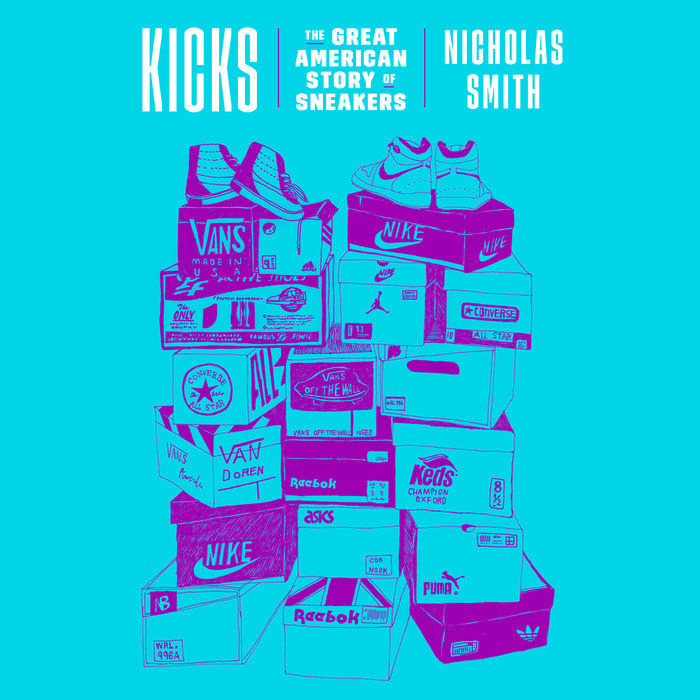Nice Shoes
In 2020, the global estimate of athletic footwear sales – sneakers – was just under $100 billion. That’s an extraordinary amount of money. Forecasts for growth are optimistic and aggressive. The world’s insatiable desire for sneakers is both understandable, for it’s been growing consistently for several decades, and amazing, for fifty years ago the athletic footwear market was much, much smaller. What gives?
Kicks: The Great American Story in Sneakers is fascinating account of how this happened. It’s a cultural history, packed with personalities and anecdotes. While not a business study, the book, nevertheless, uses a very effective lens to understand sneakers’ importance and relevance to modern life. Explaining how and why so many people care so much about their sneakers, it makes for a very interesting read.
The author is journalist Nicholas Smith. He’s not a sneakerhead but he clearly is a fan of stylish athletic footwear. Smith’s enthusiasm and dogged curiosity drives the book’s enthusiasm and pace.
Charles Goodyear was the father of sneakers. An American self-taught chemist who had an unshakeable faith in his ability to unlock the secrets of rubber, Goodyear invented the process of vulcanization, leading to the tire and sneaker industry. Smith tells Goodyear’s story and moves quickly through the late 1800s and early twentieth century as the footwear industry adopted rubber in various formats. The book digs into the rise of sneakers with the growth of professional sports in the 1920s. Athletes became major media figures and major sporting events, like the Olympics, were massively important public spectacles for the use and success of athletic footwear. Chuck Taylor was a consummate salesman of Keds and a very good basketball player. Jones is great on the German Dassler brothers, whose footwear company and dramatic split led to Adidas and Puma. We learn about innovations in the 1960s and the connection of sneakers to teen life in Southern California and skateboarding. Footwear initiated and tracked many trends.
Where Kicks truly takes off is the story of Nike and the relationship between sneakers and urban culture. Smith is very good on Nike’s gamble to invest everything in Michael Jordan. He rightly explores the many connections between hip-hop, Black culture, and footwear. It’s a relationship actively sought by footwear companies, which were growing into lifestyle brands. What’s most telling is that Smith highlights the skillful marketing and campaigns that captured millions upon millions of Americans – and later the world. He is not critical, but the very story he tells opens up all manner of questions about race, racism, and many ways that modern capitalism and advertising/marketing structures cultural identities. The story simply begs for discussion and consideration.
Reading Kicks was enlightening and troubling, entertaining and thought provoking. It calls into question the many ways that we’ve been marketed into ideas of what is and is not stylish, authentic or cool. It’s informative and fun. I will never look at my sneakers the same again.
David Potash
